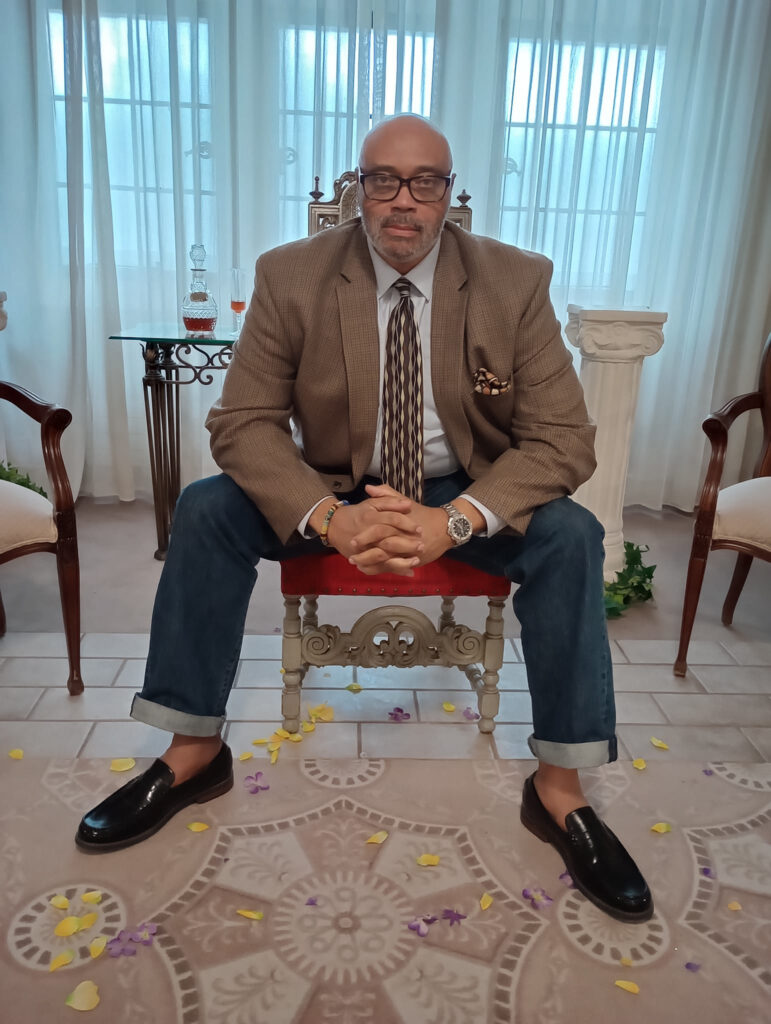Basim Blunt grew up in Jersey City, then moved to Dayton, Ohio for a radio job in the 1990s. At first, Blunt admitted, “I wasn’t impressed. This is a small town.”
Then one day, he was in a United Dairy Farmers store when in walked funk legend Roger Troutman “to buy some orange juice, dressed to the nines,” Blunt recounted. “I almost fainted.”
Blunt remains in Ohio to this day, working as a media producer and radio host who is among those carrying the torch for an influential musical movement that took root in the Buckeye State a half-century ago.
BASIM BLUNT, MUSIC PRODUCER AND RADIO HOST“At its heyday, Dayton had almost 20 different venues for weekend entertainment that had live bands, not jukeboxes.”

“I always call it a Great Migration of music,” said David Webb, founder of the Funk Music Hall of Fame & Exhibition Center. “When people came to the north for jobs, they brought this southern funk, the gospel, the rock and roll, the blues, from the south to the north.”
The Great Migration, which saw millions of Black Americans move north during the early to mid-20th century, led to a flowering of musical movements across the Midwest. It led to Chicago blues (think Muddy Waters) and the Minneapolis Sound (think Prince).
In Ohio, there was funk: insistently rhythmic, flamboyantly fun, and forward-looking in its use of audio effects. Artists like Ohio Players, Zapp, Lakeside, Faze-O, Sun, and Slave came out of the Dayton area and hit airwaves across the country in the 1970s and ’80s.
“It makes you want to dance even when you don’t want to dance,” said Blunt, crediting a member of Ohio Players for that insight. Marshall “Rock” Jones, bass player for that band, once told Blunt that when the group was paying its dues on the Chitlin’ Circuit, the musicians would look for nightclub patrons who were leaning against the wall or nodding off.
“Marshall said, ‘Those were the people that we wanted to play so good and so funky [for], that you would see them nodding their heads and next thing you know, they’re on the dance floor,’” Blunt recounted.
Sounds Worth Sampling
Ohio funk built on the groundwork laid by James Brown, maintaining his band’s complex interplay of bass and percussion while expanding the genre’s sonic palette with sleek flourishes and catchy melodies that would appeal to broad audiences. The artists’ bright costumes and contagious sense of fun brought funk into the MTV era.
Among the innovations embraced by Ohio funk stars, the most iconic was the talkbox: a device that combines vocals with amplified instruments to make it sound like the instruments themselves are talking. In songs like “Computer Love,” Roger Troutman of Zapp helped shape the sound of ‘80s music, delivering warm human emotions with a splash of space-age artifice.





Funk musicians from Ohio also helped introduce hip-hop to the dance floor. With their 1980 hit “Fantastic Voyage,” Lakeside produced the first R&B song to feature a rap performance. The blending of hip-hop with R&B would take hold in a massive way in the 1990s, becoming fundamental to the sound of 21st century popular music.
As hip-hop moved west, producers brought their crates of Ohio funk records. G-funk, the sound of Dr. Dre’s game-changing 1992 album The Chronic, took inspiration and often direct samples from tracks like Ohio Players’ “Funky Worm.”
“Dayton, Ohio is the most sampled city,” said Webb. Ohio Players alone have been sampled by the Notorious B.I.G., De La Soul, N.W.A., A Tribe Called Quest, Mary J. Blige, Salt-N-Pepa, OutKast, Snoop Dogg, and D’Angelo among many others.

Dayton Comes Alive
Why did this transformative, irresistible music come out of Ohio specifically? Blunt credits the combination of economic opportunity and a commitment to music education.
“Dayton, Ohio was a working-class town … you could get a good factory job and buy a house,” Blunt said. “For a lot of African Americans, what they did with the extra money was buy their kids instruments so they can take music classes at school. There began a fierce rivalry of the different high schools in Dayton: whose band was the best?”
Once those students graduated, they had no shortage of stages to take their talent to the next level. “At its heyday, Dayton had almost 20 different venues for weekend entertainment that had live bands, not jukeboxes,” Blunt continued.
Today, the legacy of Ohio funk lives on in bands playing classic sounds, like the members of the Dayton Funk All-Stars. Beyond Ohio, the music’s influence continues to spread. “All of Bruno Mars’s stuff goes back to the ’70s style,” said Webb. “You have people who are in gospel doing funk music.”
Webb’s organization is currently fundraising for a brick-and-mortar center to celebrate classic Ohio funk. In the meantime, Webb is celebrating the sound through projects like a radio show and podcast called “The Dayton Scene.” Ultimately, Webb hopes, the Funk Music Hall of Fame & Exhibition Center will be a site not only to remember past Ohio greats but to provide music education for the next generation.
The place of southwestern Ohio in funk history, and the music’s future, is assured. “There’s five rivers surrounding the Dayton metro,” Blunt pointed out. “The famous saying in Dayton is, there’s something in the water here.”
